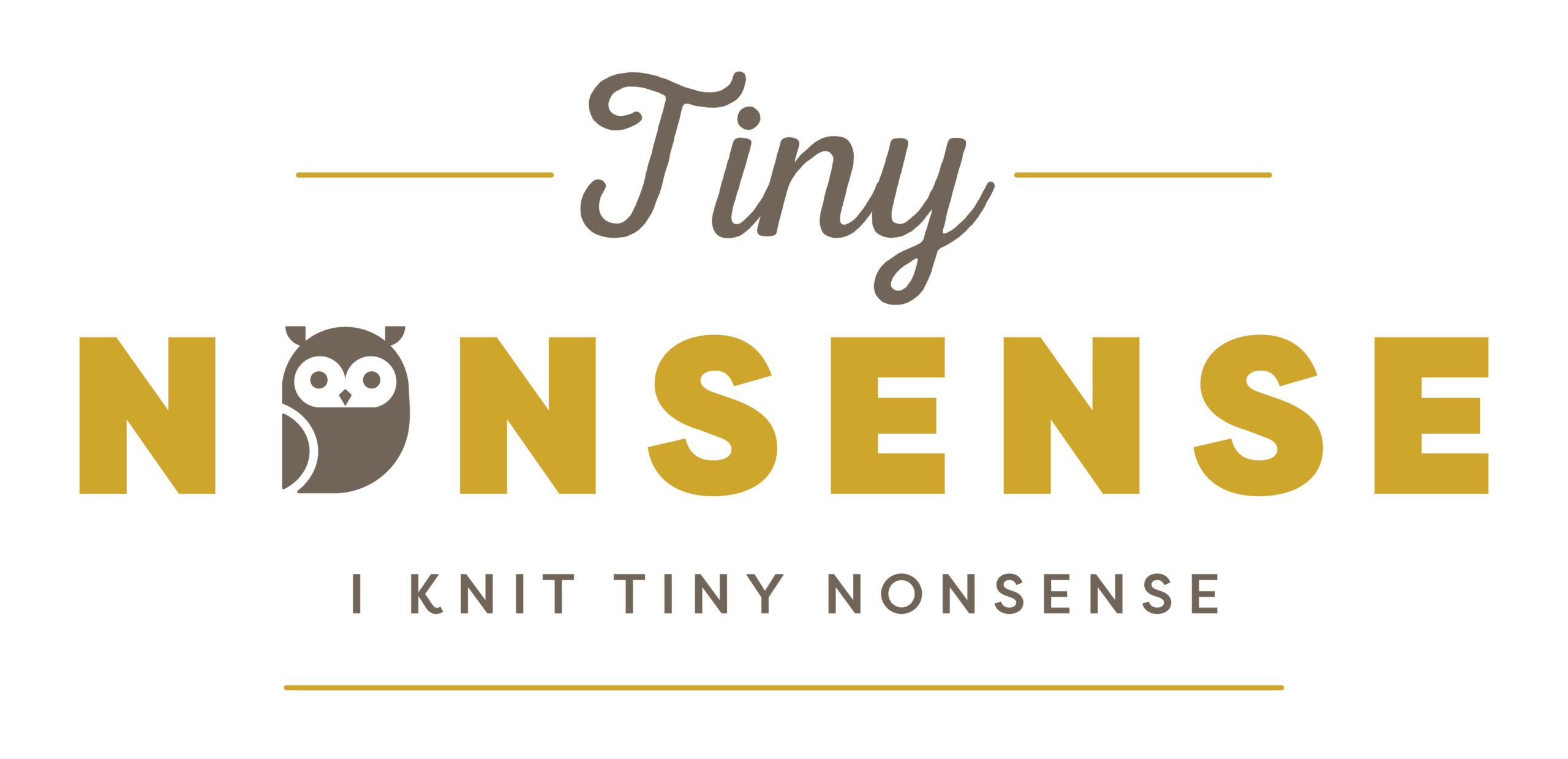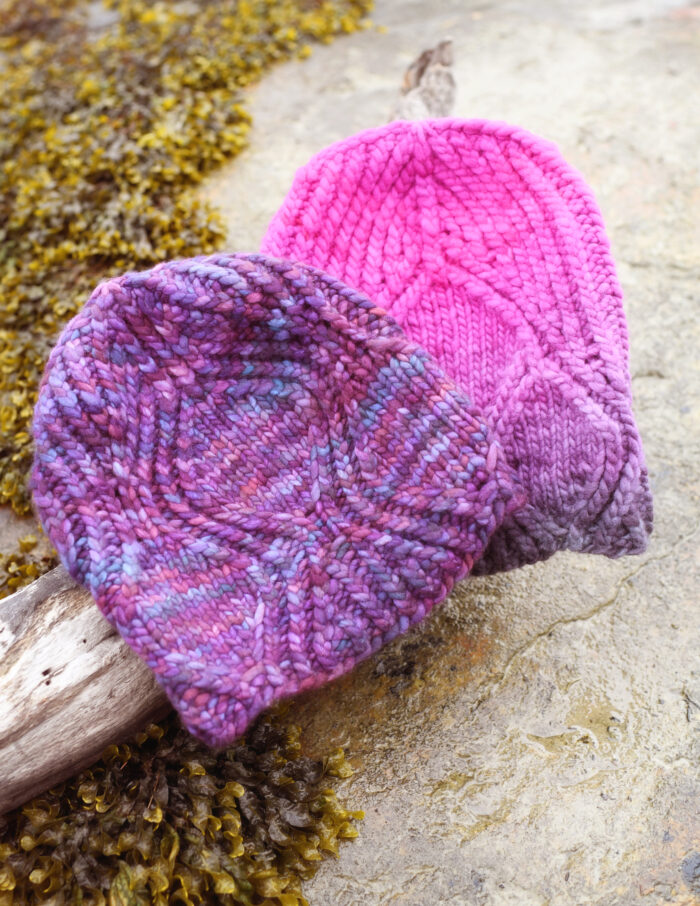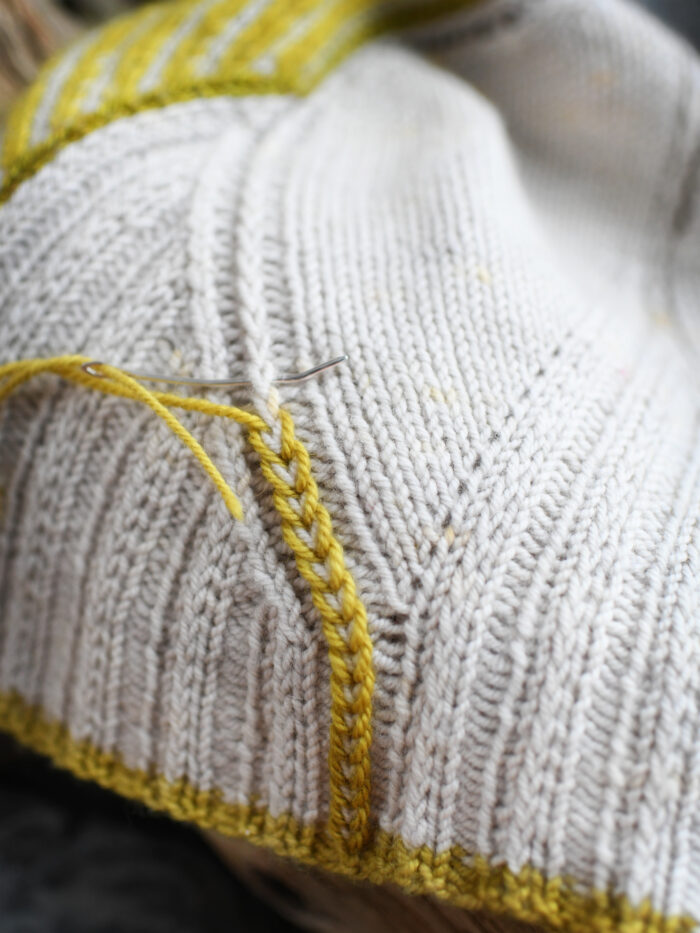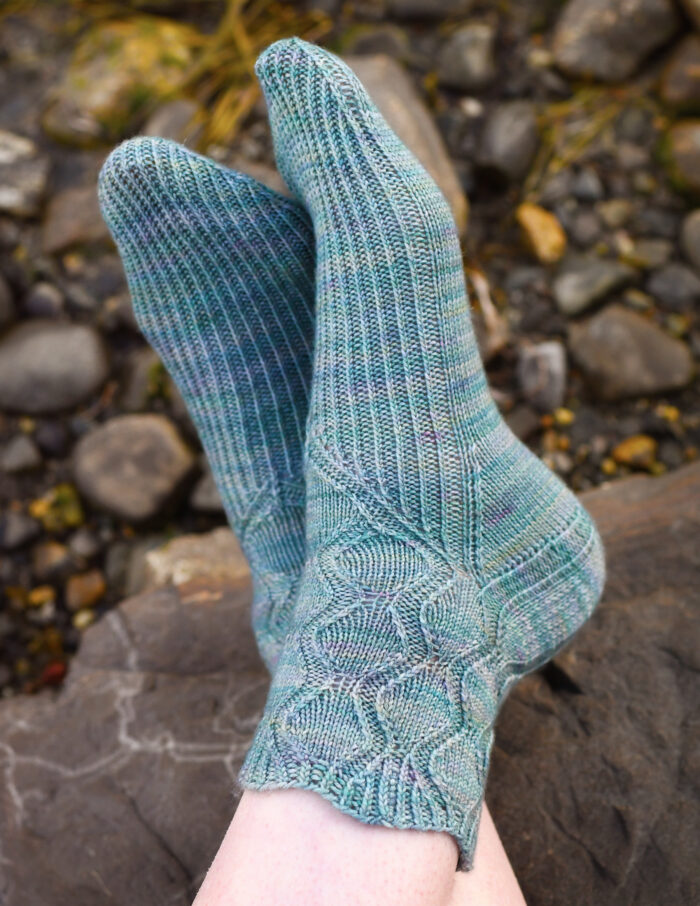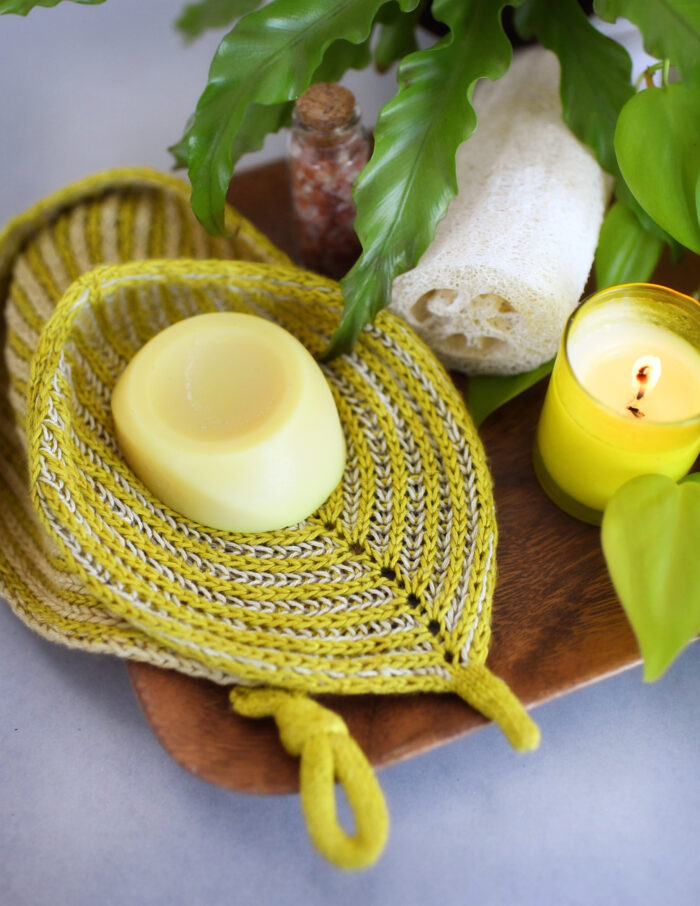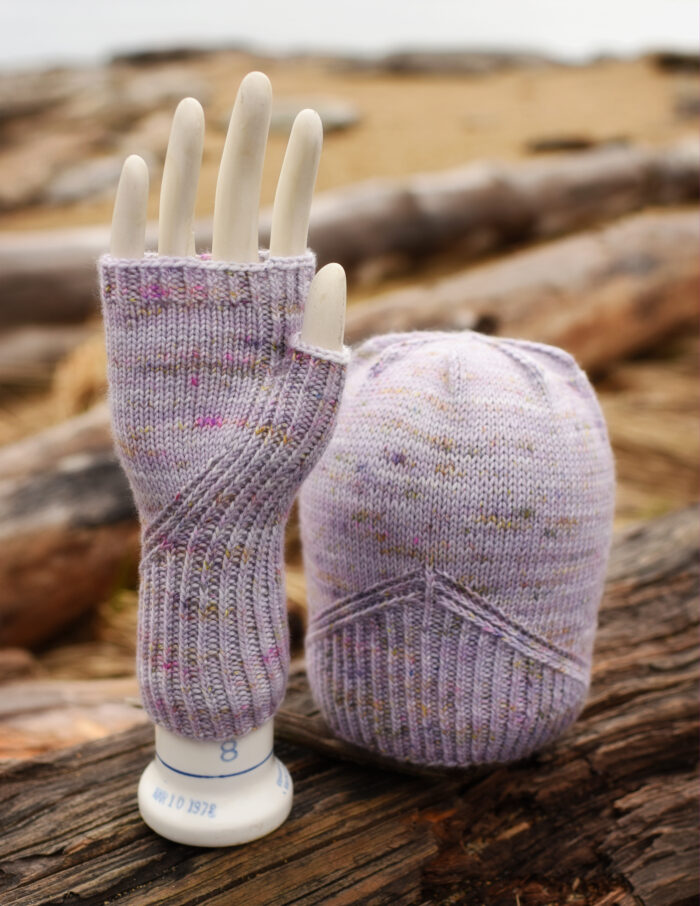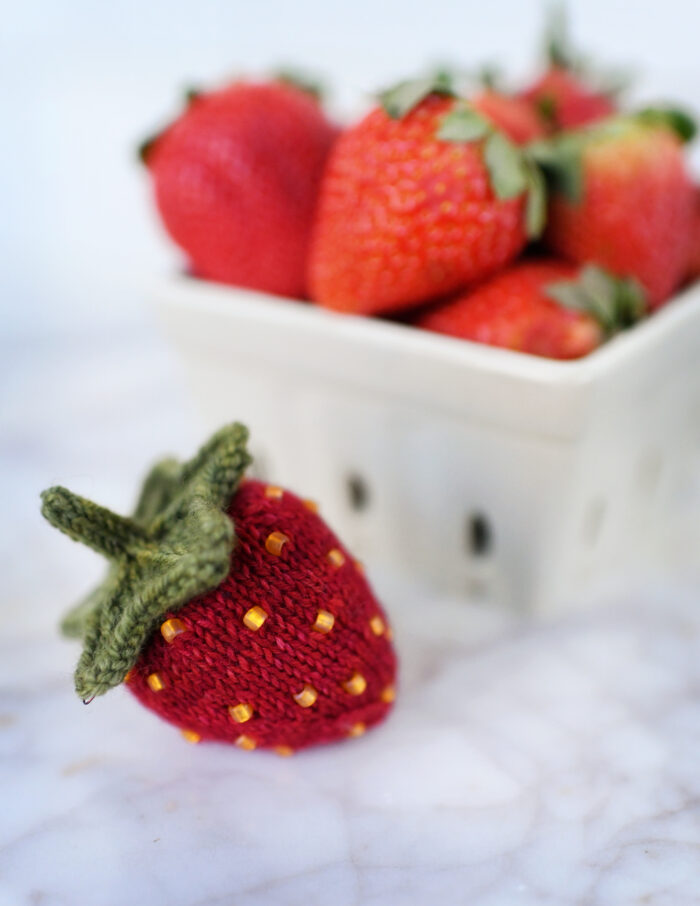Summer School, Slippers
Yeah, fine. Slippers are not socks. But the line between knit slippers and socks gets a bit fuzzy at the edges. And if you’re a fan of knitting socks, I suspect you’re going to absolutely adore knitting slippers. It’s all the same cozy vibe, but with fatter yarn and less surface area to cover, so you’re done faster!
Now, it’s the very middle of summer and I get snarly when it’s above about 68 degrees. The world is weird and scary and oh my goodness are instagram and twitter shouty at the moment. And I have aboooout four spare brain cells to rub together. So I’m not quite feeling up to any sort of exhaustive discourse on slippers. So I’m going to take the lazy way our and just sort of pepper you with Nifty Things About Slippers that I wish I’d known on my first few pairs. Scandalous yes, but that’s just how this year is going. We’re all going to take what we can get.
First up, yarn choice! Remember all the things I said about picking yarn for extra thick socks? Yup, all that applies here as well (oh and while we’re at it, the stuff I said about making your toes pretty totally applies to slippers too). Slippers are the perfect place to use worsted or aran weight yarns. The thicker your yarn, the more substantial your slipper will feel. But, as always, you do want to work at a surprisingly dense gauge (much denser than the ball band will probably suggest). With socks, you’re doing that so they won’t wear out. With slippers, you’re doing it for that reason, but also so it will feel nice and substantial and have some structure. Oh, and with the very thickest yarns, you want to be sure you knit tightly so that the fabric doesn’t feel ropey under your feet. If you knit too loosely, your feet are totally sensitive enough to notice the spaces between your stitches and you can get weird pressure points, a dense fabric takes care of that.
Next, swatching. Yes, I know you just made a face. But here’s the thing…most slipper patterns (and so far all of mine to date) have you knitting some of the slipper flat and some of the slipper in the round. And a lot of people get a different gauge working flat versus working in the round. And if your gauge changes in the middle of your slipper, you’ll see it. Then you’ll swear and send me mean notes and then I’ll swear and think mean things. We can avoid all of that if you’ll just swatch and check that you get the same gauge when working flat or in the round. If you do the same gauge both ways, awesome, carry on! If you don’t, fiddle about with your needles until you do. I find I get a very slightly looser gauge when I’m knitting flat with a slippery yarn. It’s more pronounced the looser I knit (yet another point in favor of knitting tightly for slippers). If your gauge difference is small enough that changing a full size makes too big of a change, you can try switching the material of your needles (I generally knit slightly tighter on metal needles, slightly looser on wooden needles) or the shape of your needles (I generally knit slightly tighter on square needles, slightly looser on round needles). And do remember to block your swatches. Sometimes what looks like ‘ack, my fabric is looser when I knit flat’ is really just my fabric being a bit less even when I knit flat, and that goes right away when I block.
Oh and since it came up in the swatching discussion, let’s sneak in a bit about blocking too. Now as always, I think you should block your knits. But blocking doesn’t have to be hard or complicated. In this case, it can very easily be ‘get it wet, smooth it out flat, let it dry.’ If you just sort of happen to have sock blockers on hand, you can totally use those too. They’ll absolutely work. And if you want to become an absolute slipper knitting machine, if you find yourself heeding to take lots of pictures in a professional capacity (that’s my excuse), or if you just have a rather eclectic decorating style, you can keep your eyes out for shoe lasts. Those are the forms that shoes are made on and are thus rather foot shaped, making them perfect for blocking slippers. I’ve found mine on etsy and ebay (put in ‘shoe last’ as a search term). But again, don’t feel like you have to go buy something special. Just getting them wet and smoothing them out does about 98% of what the fancy toy would do.
And finally, a quick slipper pep talk. Slipper patterns can look a tiny bit daunting. They tend to have some slightly funny looking charts (it’s just because you’re making a fairly precise shape), and they tend to look unspeakably odd at some point in the middle. I try to reassure you about that ‘ack they look weird in the middle’ part by showing you a bunch of photos of the construction process in the pattern. But really the best thing you can do, whether you’re using one of my patterns or someone else’s, is to have a little bit of confidence. Put in a life line if you’re feeling cautious, but with slippers, if you work a dozen more rows after you start feeling nervous, things usually clear right up!
And once they do, you’ll be tucked up in your favorite chair, under a cozy blanket, with hot chocolate on the table beside you, reading an excellent book, and wearing your new slippers in no time.
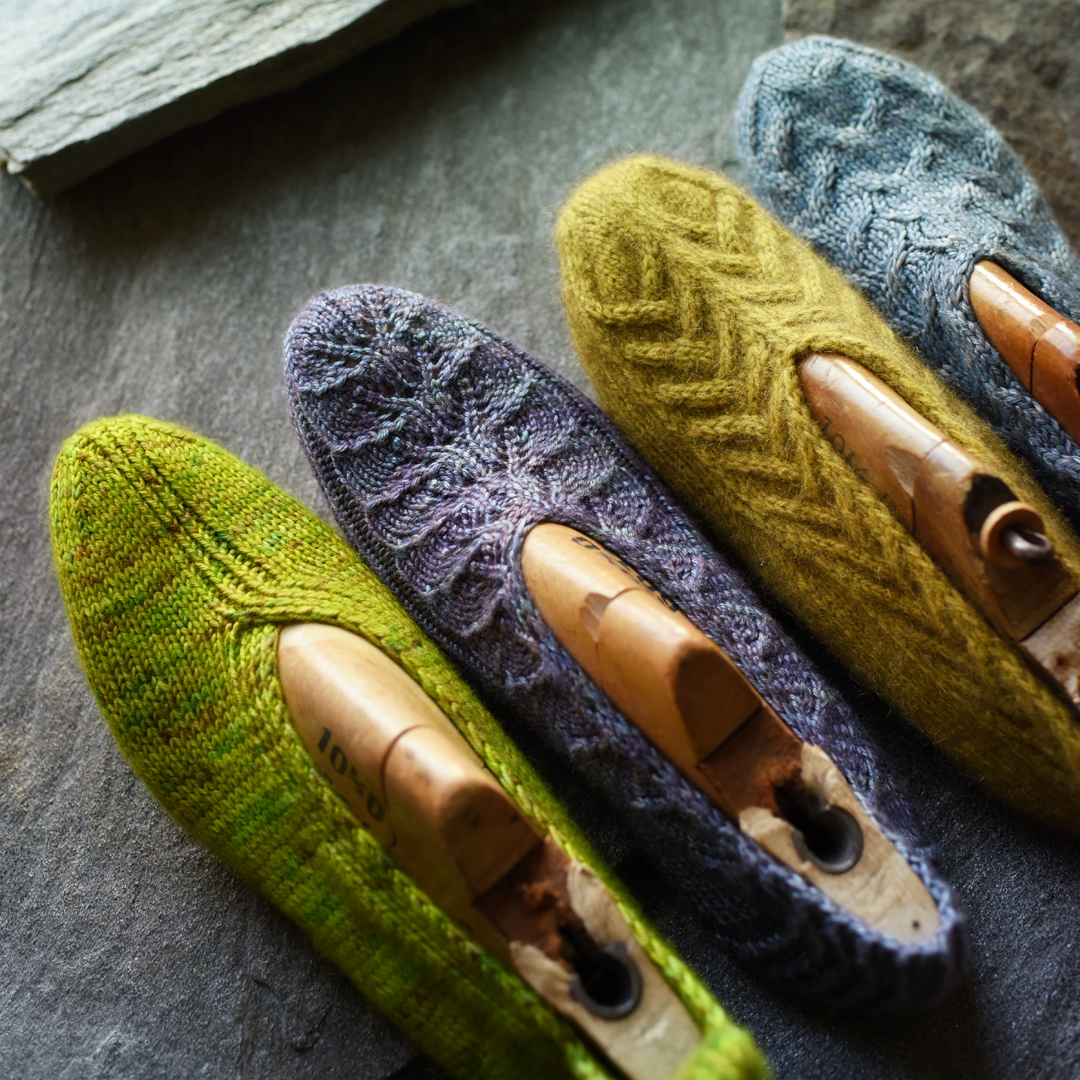
Mailing List
Want to hear when a new pattern comes out or something fun is going on? Sign up below!
Patreon
Want to support the content I create, get nifty bonus material for some of my favorite patterns, or get every new release delivered right to your inbox? Head over to patreon and sign up!
